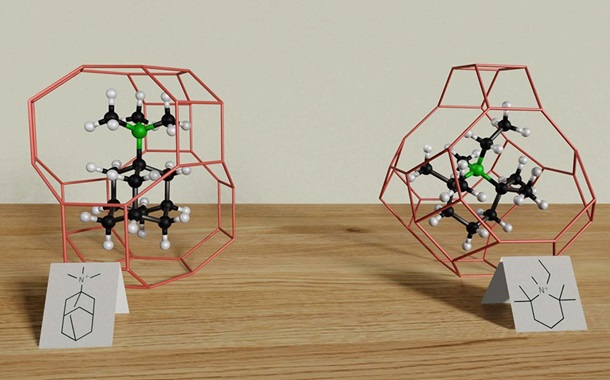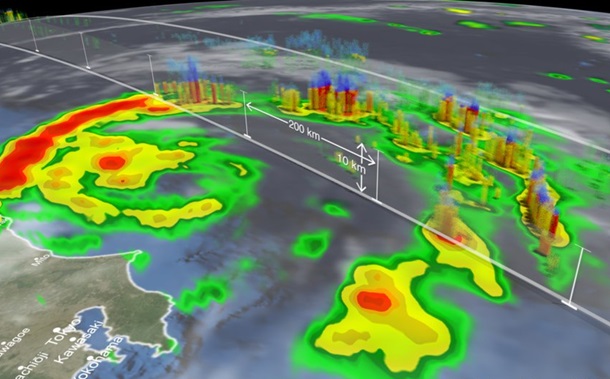Efficient Object Detection with an Optimized YOLOv8x Model
Downloads
This study developed an efficient object detection model for indoor environments, addressing common challenges such as occlusions, varying lighting, and cluttered scenes. We evaluated several YOLOv8 variants—ranging from nano to extra-large—and introduced an optimized YOLOv8x model. Our approach combines structured pruning, quantization-aware training, and advanced data preprocessing techniques, including augmentation and noise reduction, to improve model performance while reducing computational demands. The models were developed and evaluated using a carefully selected indoor object detection dataset featuring ten common categories. Performance was measured through key metrics like precision, recall, and mean average precision (mAP). Among them, the fine-tuned YOLOv8x clearly outshined the baseline models, reaching a training precision of 0.577, a recall of 0.572, and an mAP@0.50 of 0.537. When tested on new data, it demonstrated even better generalization, delivering a precision of 0.502, a recall of 0.528, and an mAP@0.50 of 0.480—proving robustness and reliability in real-world scenarios. These results demonstrate that pruning and quantization can significantly reduce model complexity without sacrificing accuracy, which helps to detect indoor objects. In essence, it is optimized for indoor object detection, offering promising applications in smart environments, surveillance, and robotics.
Downloads
[1] Pagire, V., Chavali, M., & Kale, A. (2025). A comprehensive review of object detection with traditional and deep learning methods. Signal Processing, 237, 110075. doi:10.1016/j.sigpro.2025.110075.
[2] Amjoud, A. B., & Amrouch, M. (2023). Object Detection Using Deep Learning, CNNs and Vision Transformers: A Review. IEEE Access, 11, 35479–35516. doi:10.1109/ACCESS.2023.3266093.
[3] Pagire, V. R., & Kulkarni, C. V. (2014). FPGA based moving object detection. 2014 International Conference on Computer Communication and Informatics, 1–4. doi:10.1109/iccci.2014.6921802.
[4] Amit, Y., Felzenszwalb, P., & Girshick, R. (2021). Object Detection. Computer Vision. Springer, Cham, Switzerland. doi:10.1007/978-3-030-63416-2_660.
[5] Szegedy, C., Toshev, A., & Erhan, D. (2013). Deep Neural Networks for object detection. Advances in Neural Information Processing Systems, 26. doi:10.54097/hset.v17i.2576.
[6] Khan, S., Nazir, S., & Khan, H. U. (2021). Analysis of Navigation Assistants for Blind and Visually Impaired People: A Systematic Review. IEEE Access, 9, 26712–26734. doi:10.1109/ACCESS.2021.3052415.
[7] Ben Atitallah, A., Said, Y., Ben Atitallah, M. A., Albekairi, M., Kaaniche, K., Alanazi, T. M., Boubaker, S., & Atri, M. (2023). Embedded implementation of an obstacle detection system for blind and visually impaired persons’ assistance navigation. Computers and Electrical Engineering, 108, 108714. doi:10.1016/j.compeleceng.2023.108714.
[8] Feng, J., & Jin, T. (2024). CEH-YOLO: A composite enhanced YOLO-based model for underwater object detection. Ecological Informatics, 82, 102758. doi:10.1016/j.ecoinf.2024.102758.
[9] Baheti, B., Gajre, S., & Talbar, S. (2018). Detection of Distracted Driver Using Convolutional Neural Network. 2018 IEEE/CVF Conference on Computer Vision and Pattern Recognition Workshops (CVPRW), 1145–11456. doi:10.1109/cvprw.2018.00150.
[10] Hussain, M., Chen, T., & Hill, R. (2022). Moving toward Smart Manufacturing with an Autonomous Pallet Racking Inspection System Based on MobileNetV2. Journal of Manufacturing and Materials Processing, 6(4), 75. doi:10.3390/jmmp6040075.
[11] Li, Y., Huang, H., Xie, Q., Yao, L., & Chen, Q. (2018). Research on a Surface Defect Detection Algorithm Based on MobileNet-SSD. Applied Sciences, 8(9), 1678. doi:10.3390/app8091678.
[12] Tian, Y., Ye, Q., & Doermann, D. (2025). Yolov12: Attention-centric real-time object detectors. arXiv preprint arXiv:2502.12524. doi:10.48550/arXiv.2502.12524.
[13] Zhou, Y. (2024). A YOLO-NL object detector for real-time detection. Expert Systems with Applications, 238, 122256. doi:10.1016/j.eswa.2023.122256.
[14] Wang, A., Chen, H., Liu, L., Chen, K., Lin, Z., & Han, J. (2024). Yolov10: Real-time end-to-end object detection. 38th Conference on Neural Information Processing Systems (NeurIPS 2024), 9-15 December, 2024, Vancouver, Canada.
[15] Pulipalupula, M., Patlola, S., Nayaki, M., Yadlapati, M., Das, J., & Sanjeeva Reddy, B. R. (2023). Object Detection using You only Look Once (YOLO) Algorithm in Convolution Neural Network (CNN). 2023 IEEE 8th International Conference for Convergence in Technology, I2CT 2023, 1–4. doi:10.1109/I2CT57861.2023.10126213.
[16] Dang, F., Chen, D., Lu, Y., & Li, Z. (2023). YOLOWeeds: A novel benchmark of YOLO object detectors for multi-class weed detection in cotton production systems. Computers and Electronics in Agriculture, 205, 107655. doi:10.1016/j.compag.2023.107655.
[17] Lee, J., & Hwang, K. il. (2022). YOLO with adaptive frame control for real-time object detection applications. Multimedia Tools and Applications, 81(25), 36375–36396. doi:10.1007/s11042-021-11480-0.
[18] Zhang, Z., Lu, X., Cao, G., Yang, Y., Jiao, L., & Liu, F. (2021). ViT-YOLO:Transformer-Based YOLO for Object Detection. IEEE/CVF International Conference on Computer Vision Workshops (ICCVW), 2799-2808. doi:10.1109/iccvw54120.2021.00314.
[19] Aulia, U., Hasanuddin, I., Dirhamsyah, M., & Nasaruddin, N. (2024). A new CNN-BASED object detection system for autonomous mobile robots based on real-world vehicle datasets. Heliyon, 10(15). doi:10.1016/j.heliyon.2024.e35247.
[20] MiguelARD. (2025). DoorDetect-Dataset. GitHub, San Francisco, United States. Available online: https://github.com/MiguelARD/DoorDetect-Dataset (accessed on August 2025).
[21] Arduengo, M., Torras, C., & Sentis, L. (2021). Robust and adaptive door operation with a mobile robot. Intelligent Service Robotics, 14(3), 409–425. doi:10.1007/s11370-021-00366-7.
[22] GitHub (2025). Thepbordin. Obstacle-Detection-for-Blind-people. Available online: https://github.com/thepbordin/Obstacle-Detection-for-Blind-people (accessed on August 2025)
[23] Kaglle (2025). Thepbordin. Indoor Objects Detection. Kaglle, San Francisco, United States. Available: https://www.kaggle.com/datasets/thepbordin/indoor-object-detection (accessed on August 2025).
[24] Wang, C.-Y., Mark Liao, H.-Y., Wu, Y.-H., Chen, P.-Y., Hsieh, J.-W., & Yeh, I.-H. (2020). CSPNet: A New Backbone that can Enhance Learning Capability of CNN. 2020 IEEE/CVF Conference on Computer Vision and Pattern Recognition Workshops (CVPRW). doi:10.1109/cvprw50498.2020.00203.
[25] Wang, C.-Y., Bochkovskiy, A., & Liao, H.-Y. M. (2023). YOLOv7: Trainable Bag-of-Freebies Sets New State-of-the-Art for Real-Time Object Detectors. 2023 IEEE/CVF Conference on Computer Vision and Pattern Recognition (CVPR), 7464–7475. doi:10.1109/cvpr52729.2023.00721.
[26] Ultralytics. (2025). Ultralytics YOLOv8. Ultralytics, Frederick, United States. Available online: https://docs.ultralytics.com/models/yolov8/ (accessed on August 2025).
[27] Ultralytics. (2025). Ultralytics YOLOv5. Ultralytics, Frederick, United States. Available online: https://github.com/ultralytics/yolov5 (accessed on August 2025).
[28] He, K., Zhang, X., Ren, S., & Sun, J. (2015). Spatial Pyramid Pooling in Deep Convolutional Networks for Visual Recognition. IEEE Transactions on Pattern Analysis and Machine Intelligence, 37(9), 1904–1916. doi:10.1109/TPAMI.2015.2389824.
[29] Lin, T.-Y., Dollar, P., Girshick, R., He, K., Hariharan, B., & Belongie, S. (2017). Feature Pyramid Networks for Object Detection. 2017 IEEE Conference on Computer Vision and Pattern Recognition (CVPR), 2117-2125. doi:10.1109/cvpr.2017.106.
[30] Liu, S., Qi, L., Qin, H., Shi, J., & Jia, J. (2018). Path Aggregation Network for Instance Segmentation. 2018 IEEE/CVF Conference on Computer Vision and Pattern Recognition. doi:10.1109/cvpr.2018.00913.
[31] Ju, R. Y., & Cai, W. (2023). Fracture detection in pediatric wrist trauma X-ray images using YOLOv8 algorithm. Scientific Reports, 13(1), 20077. doi:10.1038/s41598-023-47460-7.
[32] Tian, Z., Shen, C., Chen, H., & He, T. (2022). FCOS: A Simple and Strong Anchor-Free Object Detector. IEEE Transactions on Pattern Analysis and Machine Intelligence, 44(4), 1922–1933. doi:10.1109/TPAMI.2020.3032166.
[33] Kumar, H. (2019, September 20). Evaluation metrics for object detection and segmentation: mAP. Available online: https://kharshit.github.io/blog/2019/09/20/evaluation-metrics-for-object-detection-and-segmentation (accessed on July 2025).
[34] GeeksforGeeks. (2025). Evaluating object detection models: Methods and metrics. GeeksforGeeks, Noida, India. Available: https://www.geeksforgeeks.org/evaluating-object-detection-models-methods-and-metrics/ (accessed on August 2025).
[35] Liu, W., Anguelov, D., Erhan, D., Szegedy, C., Reed, S., Fu, C.-Y., & Berg, A. C. (2016). SSD: Single Shot MultiBox Detector. Computer Vision – ECCV 2016, ECCV 2016, Lecture Notes in Computer Science, Vol. 9905, Springer, Cham, Switzweland. doi:10.1007/978-3-319-46448-0_2.
[36] Kukil. (2022). Mean Average Precision (mAP) in Object Detection. LearnOpenCV New York, United States. Available online: https://learnopencv.com/mean-average-precision-map-object-detection-model-evaluation-metric/ (accessed on August 2025)
[37] Feng, F., Hu, Y., Li, W., & Yang, F. (2024). Improved YOLOv8 algorithms for small object detection in aerial imagery. Journal of King Saud University - Computer and Information Sciences, 36(6), 102113. doi:10.1016/j.jksuci.2024.102113.
- This work (including HTML and PDF Files) is licensed under a Creative Commons Attribution 4.0 International License.






















